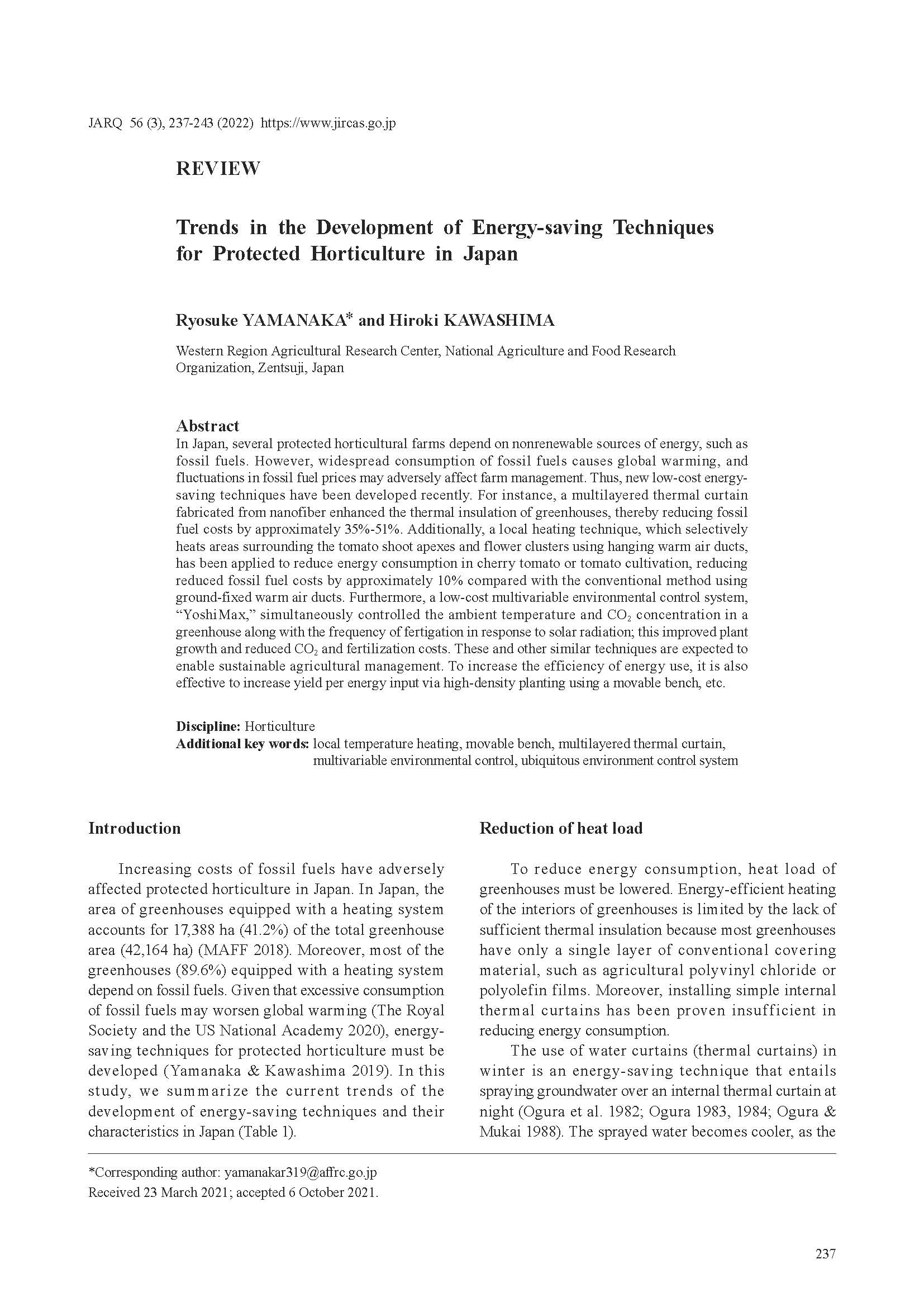Trends in the Development of Energy-saving Techniques for Protected Horticulture in Japan
JARQ : Japan Agricultural Research Quarterly
| ISSN | 00213551 |
|---|---|
| 書誌レコードID(総合目録DB) | AA0068709X |

本文フルテキスト
jarq56-3_237-243.pdf2.4 MB
In Japan, several protected horticultural farms depend on nonrenewable sources of energy, such as fossil fuels. However, widespread consumption of fossil fuels causes global warming, and fluctuations in fossil fuel prices may adversely affect farm management. Thus, new low-cost energy- saving techniques have been developed recently. For instance, a multilayered thermal curtain fabricated from nanofiber enhanced the thermal insulation of greenhouses, thereby reducing fossil fuel costs by approximately 35%-51%. Additionally, a local heating technique, which selectively heats areas surrounding the tomato shoot apexes and flower clusters using hanging warm air ducts, has been applied to reduce energy consumption in cherry tomato or tomato cultivation, reducing reduced fossil fuel costs by approximately 10% compared with the conventional method using ground-fixed warm air ducts. Furthermore, a low-cost multivariable environmental control system, “YoshiMax,” simultaneously controlled the ambient temperature and CO2 concentration in a greenhouse along with the frequency of fertigation in response to solar radiation; this improved plant growth and reduced CO2 and fertilization costs. These and other similar techniques are expected to enable sustainable agricultural management. To increase the efficiency of energy use, it is also effective to increase yield per energy input via high-density planting using a movable bench, etc.
| 刊行年月日 | |
|---|---|
| 作成者 | Ryosuke YAMANAKA Hiroki KAWASHIMA |
| 著者キーワード | local temperature heating movable bench multilayered thermal curtain multivariable environmental control ubiquitous environment control system |
| 公開者 | Japan International Research Center for Agricultural Sciences |
| 受付日 | 2021-03-23 |
| 受理日 | 2021-10-06 |
| オンライン掲載日 | |
| 巻 | 56 |
| 号 | 3 |
| 開始ページ | 237 |
| 終了ページ | 243 |
| DOI | 10.6090/jarq.56.237 |
| 言語 | eng |
